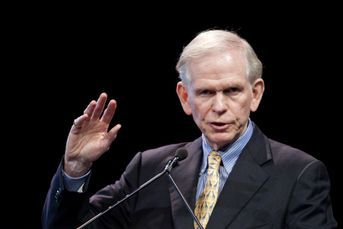Merrill aims for 30% profit margins, but at what cost?
Bank of America Merrill Lynch should be able to top 30% pretax profit margins as retirement demographics and other tail winds help boost the business. But how it will team its brokerage and banking operations is an open question.
Bank of America Merrill Lynch, which led the wirehouses with 26.6% profitability last year, should be able to top 30% pretax profit margins, executives of the brokerage firm said Tuesday at Credit Suisse’s 15th annual Financial Services Forum.
“We think over time, a 30% operating margin is an achievable operating margin in a normalized interest rate environment,” said Andrew Sieg, head of global wealth and retirement solutions at Bank of America Merrill Lynch. “We feel very good we can balance profitability, as well as ongoing investment in this business.”
Retirement demographics and other tail winds would help boost the business in coming years, but the major differentiator would be the firm’s ability to team its brokerage and banking operations, Mr. Sieg said.
“In 2009 we came together with Bank of America and we got a set of capabilities,” said John Thiel, head of U.S. wealth management at Merrill Lynch. “We got a deep experience in structured lending and have been able to take the client base of ours and really leverage the organizational strengths and the great history that U.S. Trust has in doing that.”
Banking and lending business has been a major focus and growth area for the wirehouses as they move to provide more financial planning products to wealthy clients. They make the best use of their banking units to provide a loan for a wealth management client who is looking to start a business, for example.
Merrill Lynch and U.S. Trust, Bank of America’s private-banking unit, are leading the pack.
Last year, the firm had loan balances of $119 billion, up 8.4% from 2012.
That compares to about $29 billion in loans and lending at Morgan Stanley last year.
UBS Wealth Management Americas had average loans of $39.1 billion, and Wells Fargo had $48.4 billion
according to filings with the Securities and Exchange Commission
Before Merrill Lynch was acquired by the bank in 2009, the firm only had 40 to 50 banking specialists who would move from branch to branch helping financial advisers offer bank products.
Now the firm has 700 wealth management bankers and credit specialists who are aligned with financial adviser branches, he said.
The firm’s client base of wealthy individuals is still relatively underpenetrated, Mr. Sieg said.
Just 12% have mortgages, he said.
A large area of growth in the mortgage business came from nonconforming mortgages, which constituted 85% of volume in the fourth quarter, Mr. Sieg said.
There were also opportunities in other banking services, including credit cards and checking accounts, he said. Forty-eight percent of Merrill Lynch clients were using BofA banking centers, ATMs or online or mobile services, Mr. Sieg said.
But the hardest sell could be the advisers, who may be reluctant to turn their clients over to bank specialists, some industry analysts say.
“If I’m an adviser with a large practice within Merrill Lynch, I would at some point be reluctant to try and cross-sell a product where I’m not in control of the relationship,” said Scott Smith, a director at Cerulli Associates Inc., a financial services research firm. “My halo is being affected by relationships I’m not involved in.”
Part of the concern is that proprietary banking products from loans to credit cards might not be the best deal for clients.
One wirehouse may lend at a different rate, for example, or a credit card may not have the same benefits at one firm as the other, Mr. Smith said.
There is also the perception that it also makes it hard to leave the firm, said Ron Edde, a career consultant with Millennium Career Advisors.
“The client psychologically has a connection to an institution that provides a lot of financial services,” he said. “The more inconvenient it becomes and the more problematic it becomes to say, ‘Yes, I’ll follow you.’”
Overall, the firm’s wealth management business is the third most profitable division at the firm behind the global banking division and the consumer bank, which reported a 35% profit margin last year.
Wealth management firms generally average about a 25% profit margin, according to Dan Seivert, chief executive of Echelon Partners, a research and valuation firm.
As the business cycle improves, it is likely that Merrill Lynch can hit its target, he said.
“Margins move in a range of 15% to 35% based on where firms are in the business cycle and how well they use existing capacity,” Mr. Seivert wrote in an e-mail. “I believe the higher profit margins are possible for BofA because as they add assets and revenue to the same base of reps, the associated expenses [as a percentage of revenue] will not increase nearly as much.”
Learn more about reprints and licensing for this article.








